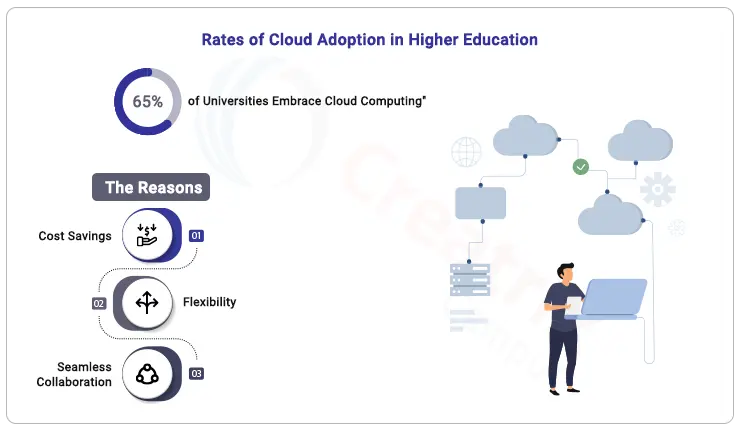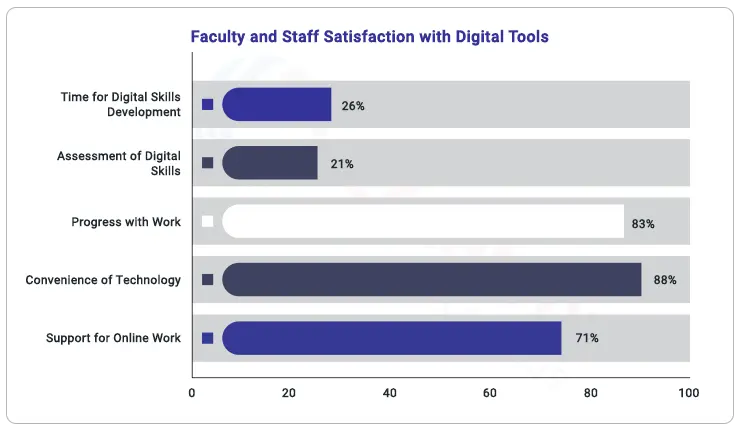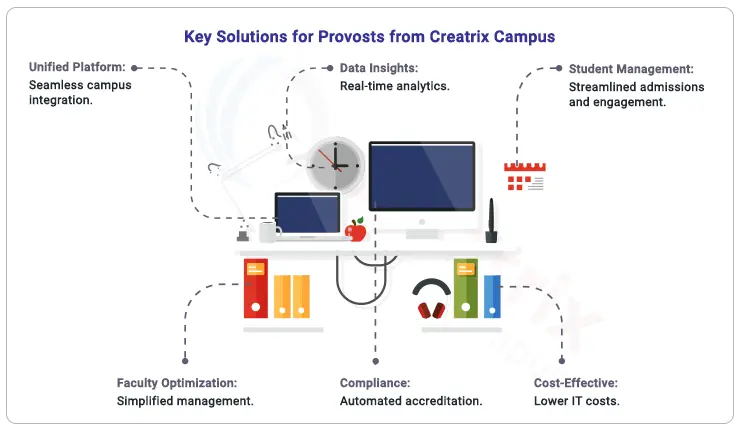There are a couple of typical ways to “read” Pamela Gillies’ investigation report into financial oversight and decision making at the University of Dundee.
One is to imagine that the issues in it are fairly unique to that university – that a particular set of people and circumstances were somehow not picked up properly by a governing body apparently oblivious to what was happening below the surface.
In that extreme, the key failing was not doing all the Scottish Code for Good Higher Education Governance asks its governors to do.
Another is to wonder whether, even with a clean bill of “good governance” health, it could happen elsewhere.
One of the things that is fascinating about organisational failure is the way in which governance tends to be picked up as a problem – because it can lead to the conclusion that because organisational failure is not widespread, the governance issues must be local.
If you position governance exclusively as scrutiny, it could of course be the case that the culture of governance is weak across the board – it’s just that most senior teams in universities don’t make the mistakes that were evidently made at Dundee, and thus we’d never know.
After all, nobody questions governance when things are going well, when funding is flowing and when student numbers are on the up. If anything, in that positioning, the danger is in complacency – because governance needs to come into its own to avoid mistakes and catch issues before they become catastrophes.
When Gillies’ report was published, I couldn’t avoid recalling countless conversations I’ve had over the years with student members of governing bodies about everything from the lateness of papers to the culture of decision making.
So to test the waters, I pulled out 14 governance issues from the investigation and put a brief (anonymous) survey out to students’ union officers who are members of their Board, Council or Court.
I can’t claim that 41 responses (captured in the second half of June and the first half of July) are representative of the whole sector, and nor are they representative of the whole of the governing bodies on which respondents have sat.
But there is enough material in there to cause us concern about how universities around the UK are governed.
A culture of control
One issue that Pam Gillies picked up was leadership dominance, where the vice chancellor and chair were found to have “behaved like they have everything under control” while governing bodies failed to provide adequate challenge.
When we asked whether student governors had experienced leadership that “routinely dominates discussions, controls narratives to present overly positive pictures, or makes it difficult for governors to raise concerns,” 68 per cent said they’d experienced this “a lot”. Another 27 per cent said “a little.”
That’s 95 per cent of respondents experiencing some level of what one might generously call “narrative management” by their senior teams.
The comments flesh out what this looks like in practice. One student governor observed:
You are told at the start that your job is to manage the VC and the SMT but they manage the governors. The Chair and the VC behave like they have everything under control. The room just does not seem interested in education or the student experience, more whether it is running as a business.
Another captured the emotional impact:
Whenever I have asked a question or said something even questioning let alone critical about UEG it’s like I have suggested burning down their office. They are allowed to be both over-defensive and over-reassuring rather than treat contributions from me and some of the other more vocal governors as contributions to thinking. It makes the whole thing quite pointless.
It’s not just about dominance – it’s also about active silencing. Gillies found that dissenting voices were marginalised and that “critical challenge was not welcomed.” Our survey bears this out.
When asked about governors being “shut down, spoken over, dismissed as ‘obstructive,’ or otherwise discouraged when trying to challenge decisions,” 51 per cent reported experiencing this “a lot”. Another 37 per cent said “a little”.
The mechanisms are subtle but effective. One respondent noted being warned at the start of their term that the previous student president had not been “constructive” and that to get things done, they needed to be “constructive” instead. The implied threat was clear – play nice or be frozen out.
It was made very clear to me at the start that the previous President had not been ‘constructive’ and that if I wanted to get things done I needed to be ‘constructive’. All year I have felt torn – other governors would regularly ask me at the meal what was ‘really going on’ but I never felt like I could be critical in the actual meeting because of the ‘partnership’. I feel like the VC was under a lot of pressure to perform for the governors, and that makes it impossible to say anything about what you think is going wrong.
Another described the choreography of exclusion:
The power dynamics are fascinating if you’re into that sort of thing. Watch who the Chair makes eye contact with, whose contributions get minuted vs. ‘noted’, who gets interrupted vs. who can ramble for 10 minutes unchecked. I never got the premium treatment – I feel that the Chair needs some feedback on whose thoughts they obviously value.
That isolation extends beyond meetings. Multiple respondents noted deliberate strategies to separate them from support:
One tendency we picked up on a lot was to isolate me from support, I wasn’t allowed to discuss the papers with my CEO or have my CEO in the room. It’s only student on the board. They say that’s for confidentiality, but everyone else in the room is clearly discussing their issues with people who can put everything into a context. I think it should be the law that two students are on the board.
The theatre of governance
Gillies found that important decisions at Dundee were made outside formal governance structures, with a “small inner circle” controlling key outcomes. Our survey question on decision-making transparency suggests this is far from unique.
When asked whether “important decisions are made by a small inner circle before reaching the governing body,” 51 per cent said this happened “a lot”, with another 44 per cent saying “a little”.
The comments reveal how that manifests. One student governor described discovering a shadow governance structure:
I think there’s a huge element of culture at my institution which prevents effective governance but it’s also the structure. There’s a meeting which isn’t included in the governance structure but everything goes to it before it can go anywhere else and it’s restricted to senior managers at the university. If it isn’t approved there, it won’t happen, even if things like rent negotiations have taken place in the ‘proper’ meetings, they can just scrap it and say ‘no, this is what needs to happen’ and then we’re just told. It feels like secret meeting which secretly governs everything and every other meeting is a rubber stamp for decisions made there.
Another put it more bluntly:
The meetings are very odd places, we don’t have any input at all on anything. Everything that comes to the Court is finished, and our job seems to be to politely probe what is in front of us (always once, follow ups frowned upon). Eye-opening but completely pointless.
Gillies highlighted how late papers and missing documentation hampered effective governance at Dundee – the control of information emerges as a critical tool in maintaining this system across the sector. Over half (54 per cent) of respondents in our survey reported experiencing late papers, missing documentation, or “critical updates given verbally rather than in writing” frequently.
But it goes deeper than administrative incompetence. When asked about financial information quality – an area Gillies found particularly problematic at Dundee – 37 per cent said they’d frequently received reports that “were unclear, seemed to obscure the true position, contained unexplained anomalies, or lacked integrated information.”
One respondent shared a particularly telling anecdote:
Training – our old CFO was a dick. He said that he wouldn’t train student members of Council in the finances because we ‘wouldn’t understand it’ which, in my mind, seems like something to a) find out and b) entirely irrelevant to a governor asking to see financial information.
The systematic exclusion of student perspectives from board papers then compounds it:
Many of the budget requests and department updates did not reflect the student experience accurately whether it was missing data from specific feedback routes or lacking in student perspective entirely, it made approvals difficult for me and difficult for the board as I would then be asked for the data and even though I can share some of the issues I know of I cannot represent the entire student body. With only 48hrs notice.
The message seems to be that knowledge is power – and student governors aren’t meant to have it.
Living in fantasy land
Gillies found that Dundee’s governing body had been presented with “overly positive pictures” that obscured institutional reality. Quite striking in our survey is the disconnect between the institution presented in governance meetings and the one students actually experience.
Multiple respondents described sitting through presentations that bore no resemblance to reality:
The university that gets presented isn’t the university I was at as a student.
Another elaborated:
It feels a lot like a fantasy world in there but they really don’t know how the university actually works, and the questions they ask are so weird, like they are desperate for the university to be as good as they imagine it is when there are really a lot of problems with how it runs especially at school level.
This fantasy is then maintained through what we might call the tyranny of positivity. When asked whether they’d felt “pressure to maintain positive messaging even when you have legitimate worries,” 61 per cent said they’d experienced this “a lot”.
The enforcement mechanisms vary. Some are explicit:
They love talking about ‘student voice’ in the abstract but hate it when we actually speak. I raised concerns about library hours during exams and the DVC literally rolled his eyes. Later the Chair pulled me aside and said I should ‘pick my battles more carefully’ and focus on ‘strategic matters’.
Others are more subtle. Multiple respondents described being praised for contributions that never led to change:
I was often praised in the minutes. ‘Thoughtful contribution from the student member.’ But praise without change feels hollow – a polite pat on the head.
This disconnect between fantasy and reality is exacerbated by what several respondents identified as an unhealthy fixation on rankings:
A lot of the meetings were really interested in what I had to say, but the obsession with league tables is bizarre. We spent easily an hour at the last meeting discussing how to game NSS metrics but when I suggested actually fixing the issues students raise – timetabling chaos, inconsistent feedback, broken IT systems – I got blank stares. One governor literally said ‘can’t we just manage student expectations better?’ What’s the point?
Another observed:
There are about sixteen of us in theory but really there are six people who speak at every meeting, and it is always about whether we are beating other universities. I don’t think the governors have any way to judge how well the university is doing other than by thinking about other universities. It is very weird.
This comparative obsession substitutes for genuine evaluation of institutional health – where things become filtered through the lens of institutional positioning rather than student experience.
The survey responses also reveal how regulatory compliance has become another distorting filter. Several respondents noted how the Office for Students has inadvertently created perverse incentives:
It is very weird to me that whenever I’ve talked about student issues they are responded to with things like ‘that would not be an issue for the OfS’, like we are only supposed to worry about the student experience if OfS are doing a visit.
It suggests that governing bodies are more concerned with regulatory perception than addressing underlying problems – a dangerous conflation of compliance with quality.
The impossible position
A particularly Byzantine aspect of student perceptions of governance emerges in the contradictions around representation. Multiple respondents noted being told explicitly that they were “not a representative” of students, only to have governors constantly ask them about student views:
At the start of the year it is drilled into you that you are not a representative, and then at every meeting someone has asked me what students think, what students are saying, how students would react, and so on. It really is ridiculous.
It creates an impossible position – student governors are simultaneously expected to embody the student voice whilst being forbidden from claiming to represent it, and are consulted when convenient but dismissed when challenging.
The tokenism extends to how “the student experience” is conceptualised:
There is a pressure not to rock the boat too much or the SU funding will be under threat. One other thing is that the other governors see ‘the student experience’ as one homogeneous thing. I represent 30,000 students – disabled students, commuters, mature students, international students, care leavers – but I get 5 minutes at the end of every meeting to cover ‘student matters.’ When I highlight different needs across student groups, eyes glaze over.
One response powerfully captured another dimension of the problem:
Too many decisions are made by white upper-middle class men who have no real understanding of student demographics or experiences and the effects that rushed, ill informed decisions can have on the student body.
This homogeneity problem compounds all the others – if governance doesn’t reflect the communities it serves, how can it possibly understand their needs?
Throughout the responses runs a theme of performative partnership that masks fundamental power imbalances. Student governors describe being valued for their “input” on predetermined decisions whilst being told their contributions are “premature” on anything still under genuine consideration:
Two types of agenda items, ones where student input is ‘valued’ (anything they’ve already decided) and those where student input is ‘premature’ (anything they haven’t decided yet). Its never the right time for meaningful student contribution.
The contrast between public and private behaviour is also revealing:
I feel that the UET are like Jekyll and Hyde, they have listened to me outside of the meetings but when I have asked about things during Board meetings they react very defensively. I’m not supposed to be a rep for students but nobody else ever talks about students unless we count recruiting students.
When push comes to shove
Gillies found that committees at Dundee operated as “rubber stamping exercises” rather than providing genuine oversight. Our survey revealed similar patterns, with 46 per cent reporting committees feeling like “rubber stamping exercises.”
Even when committees try to assert themselves, the resistance is telling:
We had an issue with the auditors and the closest I’ve seen us come to blows as a Council was when the exec tried to treat the issue as annoying but closed and move on but Council had to say ‘actually, no, we’d like an audit of our auditors to work out how [confidential] was missed.’
The fundamental problem, as one respondent observed, may be structural:
I honestly think that the huge number of things the council are expected to know about and make decisions on are beyond them. They don’t meet often enough and they really do not understand their responsibilities.
Gillies documented how Dundee’s governance processes were abandoned during crisis periods. Our survey asked about governance during “difficult periods,” and of those who didn’t say “N/A”, 51 per cent reported seeing “normal governance processes abandoned, informal advisory groups bypass committee structures, or key oversight bodies become inactive when they’re most needed.”
It suggests that whatever thin veneer of good governance exists in normal times rapidly dissolves under pressure – precisely when robust governance is most essential:
Student input in governance is at a real risk of just becoming a box ticking exercise as I have sat in meetings where the student experience is discussed by everyone but the students in the room. Once decisions need to be made at speed all thought for student and staff is ignored and it is often because of their own burdensome governance structures that inhibit the agility needed for such a volatile time in HE.”
The human cost
The emotional toll shouldn’t be underestimated. Multiple respondents described feeling “out of place,” “invalidated,” or like they were “betraying everyone” simply by asking questions.
One particularly poignant comment came from a sabbatical officer who left their role early:
It was a really tough experience as I had students relying on me. I wish that I could’ve stayed in my role for longer but the lack of transparency and wish to subdue the view for students contradicted my individual beliefs and leadership style. I was supportive and I wanted students to know what I was doing. This wasn’t always possible.
And the lack of institutional learning is telling:
It is telling that they spent so much time with me at the start but haven’t spent any time with me to get my feedback at the end. I feel that they should do exit interviews to learn about how intimidating the atmosphere can be.
Perhaps most damning is the response to our final question. When asked whether they “feel confident that your governing body would identify and respond appropriately to serious institutional risks,” only 32 per cent expressed confidence.
That means 68 per cent of student governors – governors who usually have the most intimate knowledge of how their institutions actually operate – doubt their governing body’s ability to spot and address serious problems.
One captured the fundamental dysfunction:
If I compare it to being on my union board I think the governors is a joke. If I ask why or how in the union we have a decent conversation. If I do it at governors the atmosphere is like I’ve betrayed everyone. And if I say something isn’t clear that is turned into something I’ve not done or read. We’re not governors. We’re an audience.
Another summed up the experience with clarity:
I feel that the whole thing is engineered to make the vice chancellor and her team to look good rather than gather our input or ideas, I would have side conversations with some of the community governors who shared my view but there just is not any part of any meeting where ‘input’ is welcome.
We’re not governors. We’re an audience
Some of the most problematic critiques came in respondents’ final reflections on what governance actually means in practice:
What frustrates me most is the wasted potential. These are genuinely smart, accomplished people who could transform this place. But they’re trapped in this weird bubble where everything’s fine and any criticism is disloyalty. I know I’m not the only one.
The sense of governance as performance came through repeatedly:
In the January meeting I was invited to do a presentation before the formal meeting on what student life is like and I got a lot of praise from the Chair about how eye-opening it was. But about half of the governors were not there and the PVC-E went off on one about how the university’s surveys contradicted some of the things we were saying. I feel that the whole body just doesn’t have a clue about students or staff and what it is like to be a student in 2025.
One respondent captured the Kafkaesque nature of their experience:
The whole ‘critical friend’ thing is such a con. We’re meant to be critical but every time I challenge something I get ‘well, Council can only advise, we cannot instruct the executive.’ So we’re legally responsible for decisions we can only ‘advise’ on? The Vice Chancellor keeps saying Council is ‘not a court’ whenever we try to hold them accountable. I’ve started asking ‘what CAN Council actually do?’ because honestly I’m not sure anymore.
The broader implications were spelled out starkly:
The big, big, BIG thing for us as student leaders has been ‘what Council is and is not for’. Often, when we’ve brought issues for discussion or ‘airing’ at Council, I have had every variation of ‘Council is not a court’ ‘Council can only advise the exec, it cannot instruct it’ ‘Council is for critical challenge but cannot dictate’ some of which is absolutely at odds with then being legally responsible for the decisions you have only ‘advised on’ and ‘cannot dictate’.
And perhaps most damningly:
As a new Sabbatical officer, I felt extremely out of place with the culture of Court meetings, as if I wasn’t supposed to be or welcome there. It made my input feel invalidated and overlooked. Structurally, important decisions are already decided upon within committees before reaching court.
What next?
It’s important to set what I’ve gathered in context. Student governors have a particular perspective and a specific set of confidence and cultural capital asymmetries that are bound to make being on a body of the “great and good” a difficult experience.
41 responses is not the whole sector (and may not even be from 41 universities), and it was a self-selecting survey. But we should be worried.
Out of the back of the Dundee episode, both Graeme Day and the Scottish Funding Council have committed to exploring ways to strengthen governance to avoid a repeat.
Universities Scotland has committed to collective reflection on Gilles’ findings and the lessons it shares to give “robust assurance” of financial management and good governance to funders, regulators, supporters and all who depend on universities.
It has also said it will “connect” to Universities UK’s work to consider the leadership and governance skills required in the sector in times of transformation and challenge.
As such, the same issue that students see in governing bodies is playing out nationally – there are questions that suggest a loss of autonomy, and reassurance about “performance” designed to retain it.
There is therefore a real danger that the processes will conclude what these sorts of things always conclude – that with the right “skills” and adherence to a given Code, all will be well.
But the experiences from students suggest that neither “getting the right skills” nor calls for better codes will solve the fundamental problems. The issue isn’t just about getting the “right” people around the table or training them better – it’s about reconsidering what we’re asking governance to do.
Vertical or horizontal?
As I noted here and here, the Dutch experience offers an alternative. Following a series of governance scandals in the early 2000s, the Netherlands rejected both excessive state control and unfettered institutional autonomy. Their 2016 Education Governance Strengthening Act created a “third way” – creating multi-level democratic participation from program to institutional level.
Rather than imposing rigid rules, the framework promoted “horizontal dialogue” where students, staff, management, and supervisors engage in ongoing conversations about their university.
A 2021 evaluation found meaningful channels for student and staff input had been created, with improved dialogue quality between stakeholder groups. If there’s enough of them, staff and students have turned out to be better at scrutiny than skilled lay members or someone from the funding council sat in the corner.
It’s also partly about what is discussed. Most boards operate primarily in fiduciary mode (overseeing budgets, ensuring compliance) or strategic mode (setting priorities, deploying resources). While essential, these modes often crowd out what governance scholars call the “generative mode” – critical thinking, questioning assumptions, and framing problems in insightful ways.
Generative governance asks probing questions: “What is our fundamental purpose?” and “How does this decision align with our core values?” It involves scenario planning, delving into root causes rather than symptoms, and actively considering ethical implications beyond legal compliance. And it allows senior staff to participate, rather than perform – a culture that then improves scrutiny in fiduciary mode.
It is where staff, student, and community governors could add most value – yet it’s often where their contributions are most dismissed as inappropriate or “operational.” The standard line that governors should be “concerned with the university rather than as representatives” misses the point that understanding the lived experience of those working and studying there is essential to good governance, and actually improves fiduciary scrutiny.
Put another way, maybe better fiduciary mode scrutiny could have probed more on the Nigerian students focussed business plan at Dundee. But it’s more likely that better generative mode governance could have explained what was starting to happen to the currency in Nigeria, how tough students were funding it to pay their fees, and what families were going through as the Naira went into collapse.
It’s also partly about what we think “effectiveness” means. Universities facing unprecedented challenges – financial pressures, technological disruption, legitimacy crises – need governance capable of navigating complexity, not just ticking out risk registers. They need what the Dutch reforms sought – genuine accountability to the communities they serve, not just reassuring compliance with regulatory requirements.
Universities at their best are spaces where different forms of knowledge encounter each other, and where democratic values are modeled and sustained. Their governance should reflect this reality.
As such, we need to ensure we’re solving the right problem. The issue isn’t governors who need better training or institutions that need tighter control. It’s a governance model designed for a different era and different types of organisation, struggling to cope with contemporary complexity while excluding the voices that could help navigate it.
What we do next requires courage to move beyond the false choice between corporatisation and collegial nostalgia. A third way is possible – one that takes seriously both institutional sustainability and democratic participation, that values both expertise and lived experience, that reconciles the university interest with the interests of those who study and work there rather than separating them or elevating one of them, and that governs for the public good rather than just institutional survival.
The students sitting in those boardrooms, feeling like audiences rather than governors, deserve better. So do the staff, the communities universities serve, and democracy itself.


![Fuel Innovation at Your Institution with the Design Thinking Workbook [Download]](https://blog.college-counseling.com/wp-content/uploads/2025/09/Fuel-Innovation-at-Your-Institution-with-the-Design-Thinking-Workbook.png)











